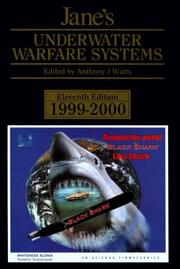| Listing 1 - 10 of 50 | << page >> |
Sort by
|
Book
Year: 1982 Publisher: Bruxelles : Assemblee de l'Atlantique Nord,
Abstract | Keywords | Export | Availability | Bookmark
 Loading...
Loading...Choose an application
- Reference Manager
- EndNote
- RefWorks (Direct export to RefWorks)
Book
ISBN: 0333397509 Year: 1986 Publisher: Houndmills, UK : MacMillan,
Abstract | Keywords | Export | Availability | Bookmark
 Loading...
Loading...Choose an application
- Reference Manager
- EndNote
- RefWorks (Direct export to RefWorks)
Book
Year: 1982 Publisher: Brussels : North Atlantic Assembly,
Abstract | Keywords | Export | Availability | Bookmark
 Loading...
Loading...Choose an application
- Reference Manager
- EndNote
- RefWorks (Direct export to RefWorks)
Multi
ISSN: 1159652X 12429767 ISBN: 2907341472 Year: 1998 Publisher: Paris Addim
Abstract | Keywords | Export | Availability | Bookmark
 Loading...
Loading...Choose an application
- Reference Manager
- EndNote
- RefWorks (Direct export to RefWorks)
Anti-submarine warfare --- France. --- Navy.
Book
Year: 1995 Publisher: Carlisle Barracks, PA Strategic Studies Institute, US Army War College
Abstract | Keywords | Export | Availability | Bookmark
 Loading...
Loading...Choose an application
- Reference Manager
- EndNote
- RefWorks (Direct export to RefWorks)
Book
Year: 1991 Publisher: Washington, D.C. : National Research Council,
Abstract | Keywords | Export | Availability | Bookmark
 Loading...
Loading...Choose an application
- Reference Manager
- EndNote
- RefWorks (Direct export to RefWorks)
Book
Year: 2009 Publisher: Santa Monica, CA : RAND Corporation,
Abstract | Keywords | Export | Availability | Bookmark
 Loading...
Loading...Choose an application
- Reference Manager
- EndNote
- RefWorks (Direct export to RefWorks)
Which military missions for unmanned undersea vehicles (UUVs) appear most promising to pursue in terms of military need, operational and technical risks, alternatives, and cost? To answer this question, the authors assess risks associated with using UUVs for advocated missions, identify non-UUV alternatives that may be more appropriate for such missions, and analyze potential costs associated with UUV development and use. They conclude that seven missions: mine countermeasures, deployment of leave-behind surveillance sensors or sensor arrays, near-land and harbor monitoring, oceanography, monitoring undersea infrastructure, anti-submarine warfare tracking, and inspection/identification - appear most promising. Among other recommendations, the authors suggest that the U.S. Navy consolidate its unmanned system master plans and establish relevant priorities in coordination with the Office of the Secretary of Defense. Increased emphasis on the use of surface platforms rather than submarines as host platforms is recommended.
Anti-submarine warfare --- Remote submersibles --- Shipping --- Submarine warfare --- Security measures
Book
Year: 2002 Publisher: Washington, D.C.
Abstract | Keywords | Export | Availability | Bookmark
 Loading...
Loading...Choose an application
- Reference Manager
- EndNote
- RefWorks (Direct export to RefWorks)
Examines the extent SURTASS/LFA will enhance the Navy's antisubmarine warfare capabilities to detect submarines and whether there are other existing or planned systems that can provide the same long-range detection capabilities as SURTASS/LFA.
Anti-submarine warfare --- Sonar. --- Equipment and supplies. --- United States. --- Procurement.
Book
ISBN: 1598751255 Year: 2002 Publisher: Santa Monica : RAND Corporation,
Abstract | Keywords | Export | Availability | Bookmark
 Loading...
Loading...Choose an application
- Reference Manager
- EndNote
- RefWorks (Direct export to RefWorks)
Can the US Navy save money by increasing its use of simulators without sacrificing readiness? This work looks at the use of simulators in the Air Force, the Marines, and French and British forces.

ISBN: 0710619200 Year: 1999 Publisher: Coulsdon, UK : Jane's Information Group,
Abstract | Keywords | Export | Availability | Bookmark
 Loading...
Loading...Choose an application
- Reference Manager
- EndNote
- RefWorks (Direct export to RefWorks)
| Listing 1 - 10 of 50 | << page >> |
Sort by
|

 Search
Search Feedback
Feedback About UniCat
About UniCat  Help
Help News
News